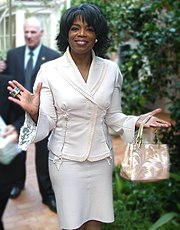Ken Wilber's Human Design Chart
5/1 Emotional Manifesting GeneratorKen Wilber: A Human Design Perspective
Ken Wilber, born on January 31, 1949, in Oklahoma City, Oklahoma, is a pioneering American metaphysical philosopher and author, celebrated for his groundbreaking contributions to integral philosophy. With a prolific career spanning over several decades, Wilber has published more than 16 influential works, including the notable texts “A Brief History of Everything” (1996) and “A Theory of Everything” (2000). His writings have become foundational texts in the fields of transpersonal psychology and spirituality, offering a comprehensive synthesis of diverse cultural, spiritual, and psychological traditions.
Early Life and Academic Pursuits
Ken Wilber’s journey into the realms of philosophy and spirituality began early in his life. His fascination with human consciousness and the deeper layers of reality led him to explore various schools of thought. His first book, “The Spectrum of Consciousness,” published in 1977, marked the inception of his integrative approach, blending elements from Buddhism, Western psychology, and other global traditions. This eclectic approach has since become a hallmark of Wilber’s work.
Wilber’s Human Design: Manifesting Generator
Within the framework of Human Design, Ken Wilber is identified as a Manifesting Generator. This unique type combines the attributes of both a Generator and a Manifestor, endowing Wilber with a distinctive blend of creativity, efficiency, and energy. As a Manifesting Generator, Wilber navigates life’s challenges by responding to them with innovative solutions and dynamic action, making him an influential figure in his field.
Emotional Inner Authority
Wilber’s decision-making process is guided by his Emotional Inner Authority, a crucial aspect of his Human Design. This requires him to wait for emotional clarity before taking decisive action, a practice that mirrors his philosophical approach. His work often involves deep contemplation and thorough exploration of complex ideas, allowing him to articulate his thoughts with precision and clarity.
Profile 5/1: Practical Solutions and Foundational Knowledge
Ken Wilber’s Human Design profile is 5/1, indicating an innate ability to provide practical solutions while seeking foundational knowledge. This profile suggests a balance between pragmatic application and the pursuit of deep understanding, which has significantly influenced his development of integral philosophy. His theoretical frameworks are known for their practical applicability and profound insights into human nature and consciousness.
Incarnation Cross: Left Angle Cross of Refinement
Wilber’s Incarnation Cross, the Left Angle Cross of Refinement (19/33 | 1/2), defines his life path as one focused on refining ideas and integrating diverse perspectives. This is evident in his work at the Integral Institute, which he founded in 2000. The Institute serves as a platform for exploring and advancing integrated approaches to personal and professional development, fostering a comprehensive understanding of consciousness and existence.
Channels of Insight and Connection
Ken Wilber’s Human Design channels, including 13-33, 15-5, 27-50, 32-54, and 19-49, reflect his capacity for deep emotional connections, transformative insights, and an innate understanding of the human experience. These channels highlight his ability to connect with others on an emotional and intellectual level, providing transformative insights that continue to inspire those seeking a more integrated understanding of consciousness.
Personal Life and Influences
Throughout his personal life, Ken Wilber has experienced significant relationships that have shaped his philosophical outlook. He married Amy Wagner in 1973, but the couple divorced in 1981. In 1983, he married Terry Killam (known as Treya), whose battle with breast cancer profoundly influenced Wilber’s work and personal growth. Treya’s passing in January 1989 was a pivotal moment, leading Wilber to explore themes of suffering, healing, and transformation in greater depth.
Later, Wilber met Marci Walters while working at Naropa University, and they married in 2001. Although they separated shortly thereafter, each relationship has contributed to Wilber’s understanding of love, loss, and the human condition, enriching his philosophical insights and writings.
Legacy and Continuing Influence
Ken Wilber’s work continues to resonate with scholars, practitioners, and spiritual seekers worldwide. His integral philosophy offers a comprehensive framework that addresses the complexities of human consciousness and existence, encouraging individuals to cultivate a more holistic understanding of themselves and the world.
As a Manifesting Generator with Emotional Inner Authority, Wilber’s approach to philosophy and spirituality is deeply contemplative and rigorously analytical. His commitment to refining ideas and integrating diverse perspectives ensures that his legacy will endure, inspiring future generations to explore the intricacies of consciousness and personal growth.
Frequently Asked Questions
What is Ken Wilber’s Human Design type?
Ken Wilber is a Manifesting Generator, which combines the qualities of both a Generator and a Manifestor, enabling him to respond to life’s challenges with creativity and dynamic energy.
What is the significance of Ken Wilber’s Emotional Inner Authority in Human Design?
Wilber’s Emotional Inner Authority guides him to wait for emotional clarity before making decisions. This aligns with his philosophical approach, emphasizing deep contemplation and thoughtful exploration of complex ideas.
How does the 5/1 profile influence Ken Wilber’s work?
The 5/1 profile reflects Wilber’s natural ability to provide practical solutions while seeking foundational knowledge. This balance between pragmatic application and deep understanding informs his integral philosophy and writings.
What is Ken Wilber’s Incarnation Cross in Human Design?
Wilber’s Incarnation Cross is the Left Angle Cross of Refinement (19/33 | 1/2), suggesting a life path focused on refining ideas and integrating diverse perspectives, which is evident in his work at the Integral Institute.
How have Ken Wilber’s personal experiences influenced his philosophical outlook?
Wilber’s relationships and personal experiences, including significant partnerships and the loss of his wife Treya, have profoundly influenced his understanding of love, loss, and transformation, enriching his philosophical insights and writings.
For more information on Ken Wilber, visit his Wikipedia biography.
Discover More Famous People
Browse and analyze over 55,000 public figures and celebrities.
Ra Uru Hu
5/1 Manifestor
Martha Stewart
4/6 Manifestor
David Lynch
4/6 Generator
Barack Obama
6/2 Projector
Steve Jobs
6/3 Generator
Vladimir Putin
5/1 Manifestor
Kim Kardashian
3/5 Generator
Michael Jackson
1/3 Projector
Marilyn Monroe
6/2 Projector
Ariana Grande
2/4 Projector
Oprah Winfrey
2/4 Generator
Johnny Depp
2/4 ManifestorWhat is HumanDesign.ai and how does it work?
Curious what makes Ken Wilber tick? HumanDesign.ai instantly maps their exact birth data into a fully interactive clickable bodygraph chart, letting you hover or tap every center, channel, and gate for plain-language explanations. Bella, the platform’s built-in AI guide, adds context in real time, translating complex mechanics into everyday insights so you can see how Ken Wilber’s strengths, challenges, and life themes play out on-screen.
The same tools are waiting for you. Generate your own Human Design Chart in seconds, open a library of 2000+ suggested questions, and chat with Bella as often as you like to decode your design, daily transits, and even relationship dynamics.
Want to compare energies? Save unlimited charts for friends, family, or clients, then ask Bella to reveal compatibilities, composite patterns, or coaching tips, all in one conversation thread.
Start free with core features, or unlock our Personal and Pro plans for deeper dives: unlimited Q&A, celebrity chart search spanning 55,000+ public figures, white-label PDF reports, branded content generation, and a professional profile with built-in booking for practitioners. Whether you’re exploring your own potential or guiding others, HumanDesign.ai delivers an ever-expanding toolbox of AI-powered insights—no spreadsheets, no jargon, just clarity at your fingertips.
Ready to see yours? Signup for FREE today!

